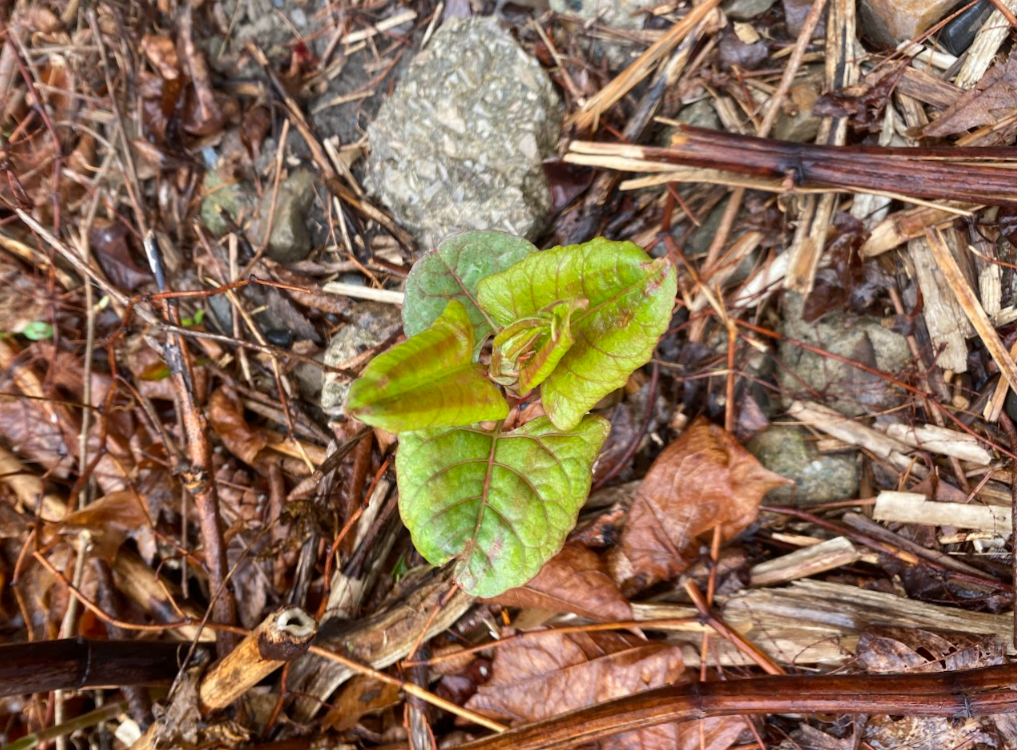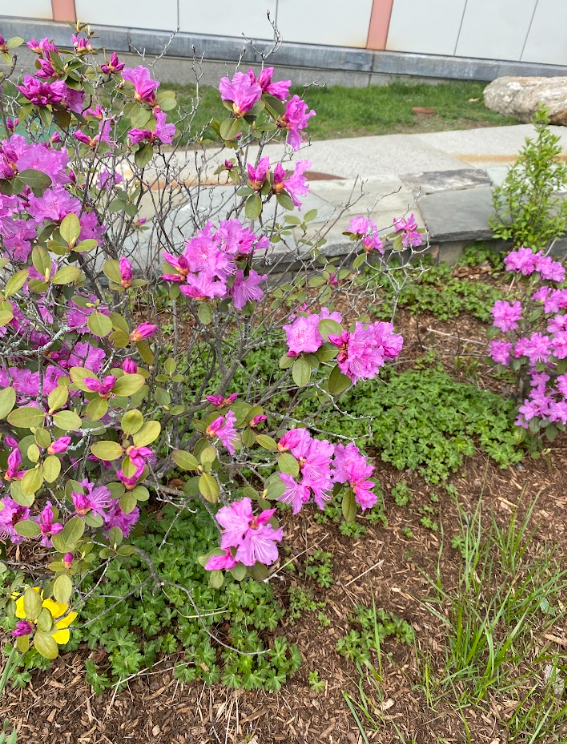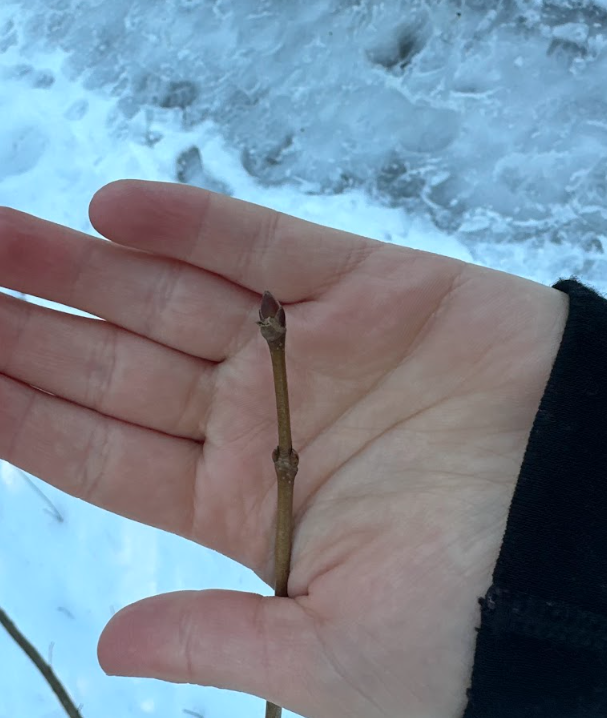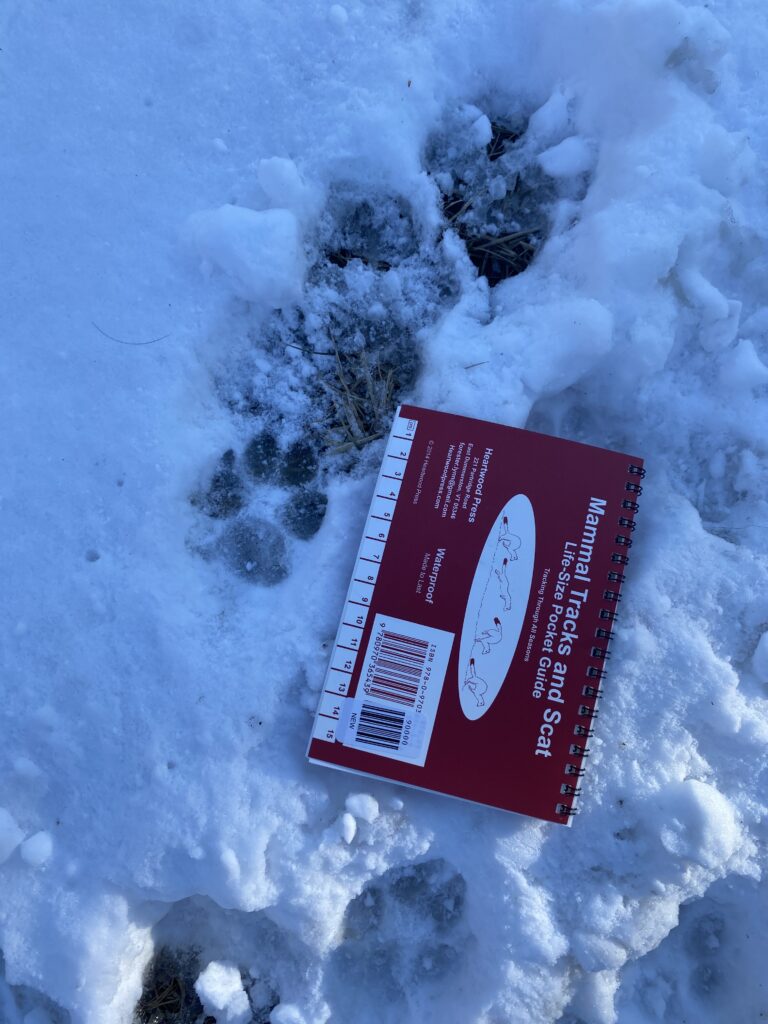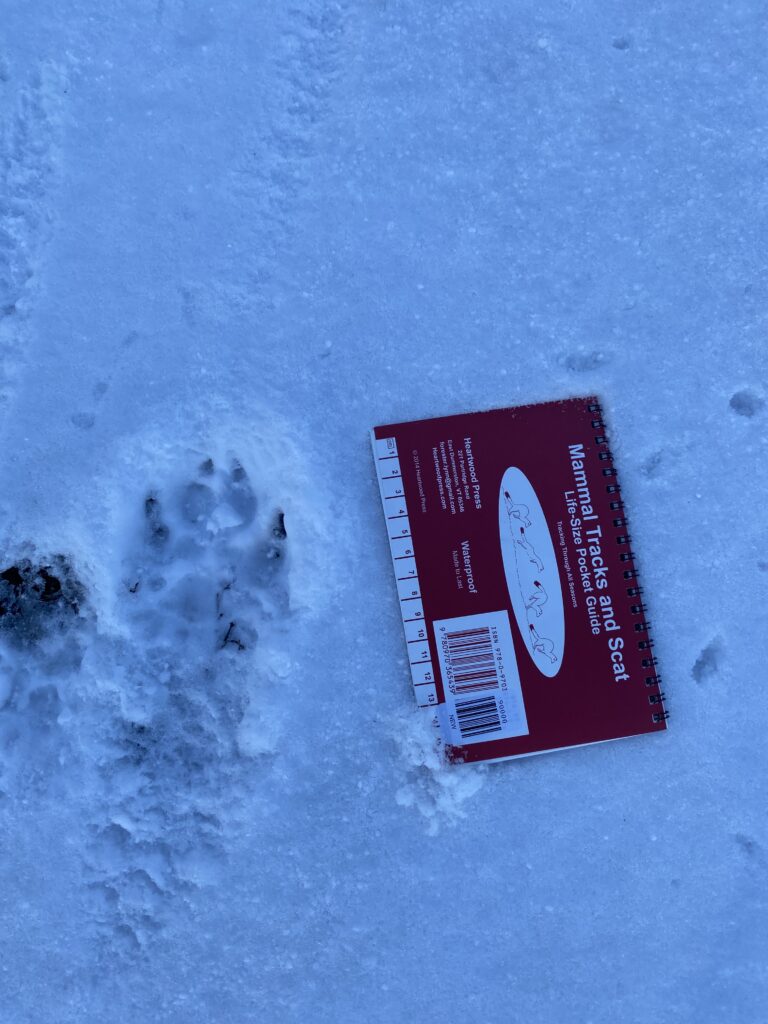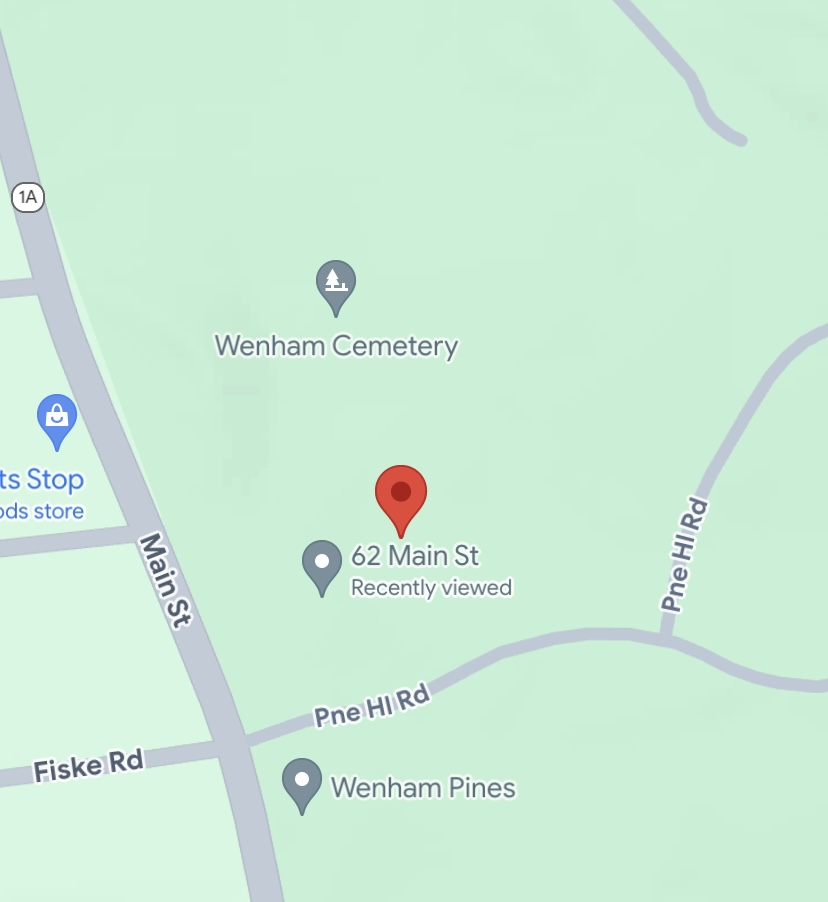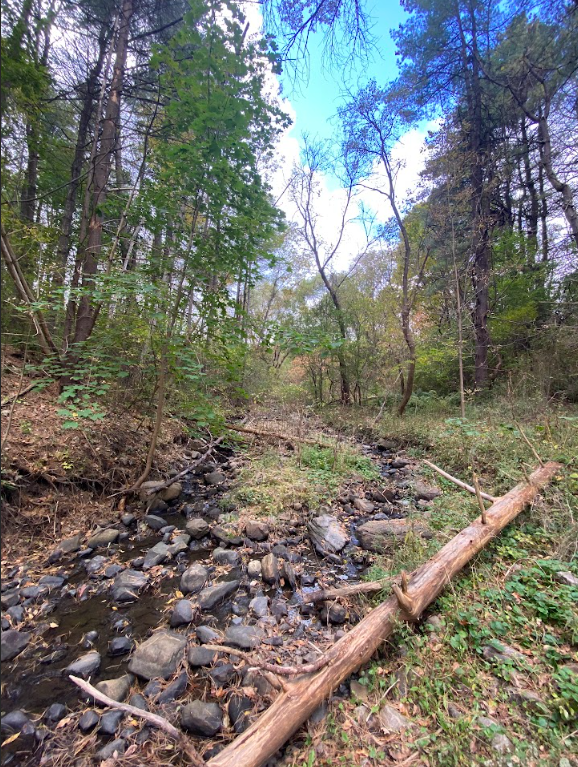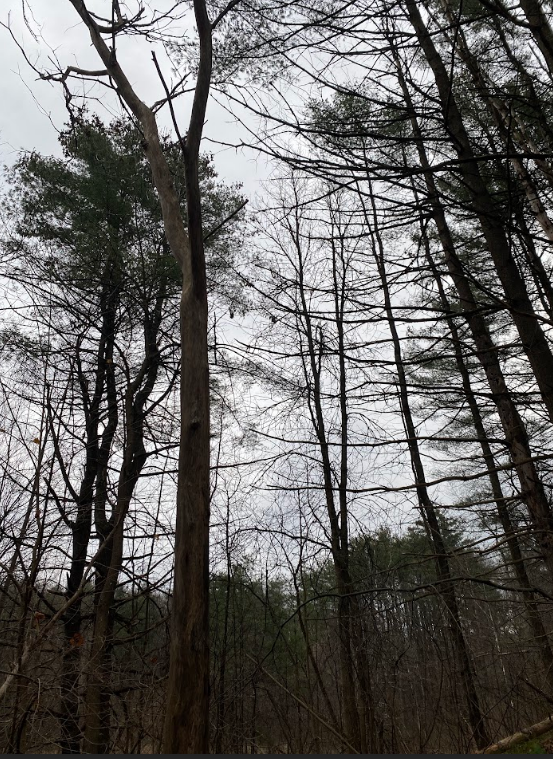My site has changed greatly in the amount of life visible. At the beginning of the semester, my site was generally colorless and just shades of grey and brown. The trees had no leaves or buds. There were only old leaves and snow on the ground with little signs of life. Now every tree is sprouting buds, and some are growing leaves as well. There are also many birds’ songs that can be heard, and grass is growing out from underneath the old leaves.

There are not too many landmarks at my site, but I have become quite familiar with the small stream that passes through my site as well as the cattails and other wetland plants within my site. The stream was slightly frozen over at the beginning of the semester but has now melted entirely. The water moves relatively quickly into a small pond. Due to the amount of water at my site, there are a large number of water-loving plants including cattails. It has been interesting to see how they change over time and grow new leaves in the spring.
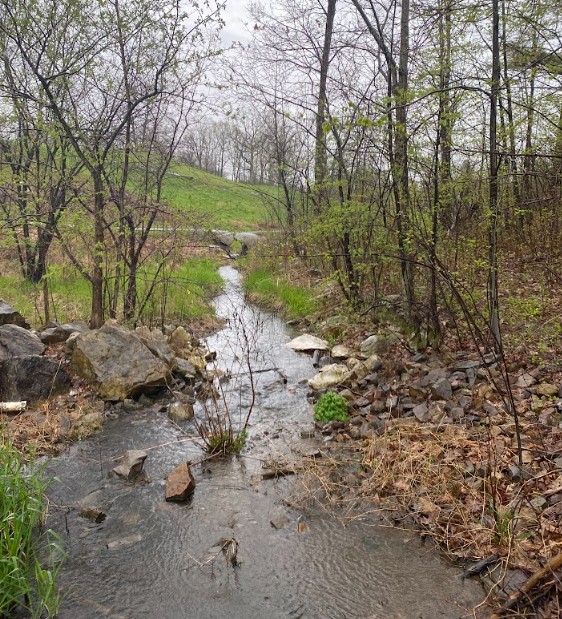
There is not really a presence of culture within the site. However, it is a place where students come to sit and spend some time outside. It is a great place to come think and feel as if you are away from campus.
I definitely feel as if I am a part of my place. I spent much time there and feel as if I know almost every aspect of the site due to the attention I have given it. I plan to visit it next year as I am living near it and am excited to grow my sense of place there.
